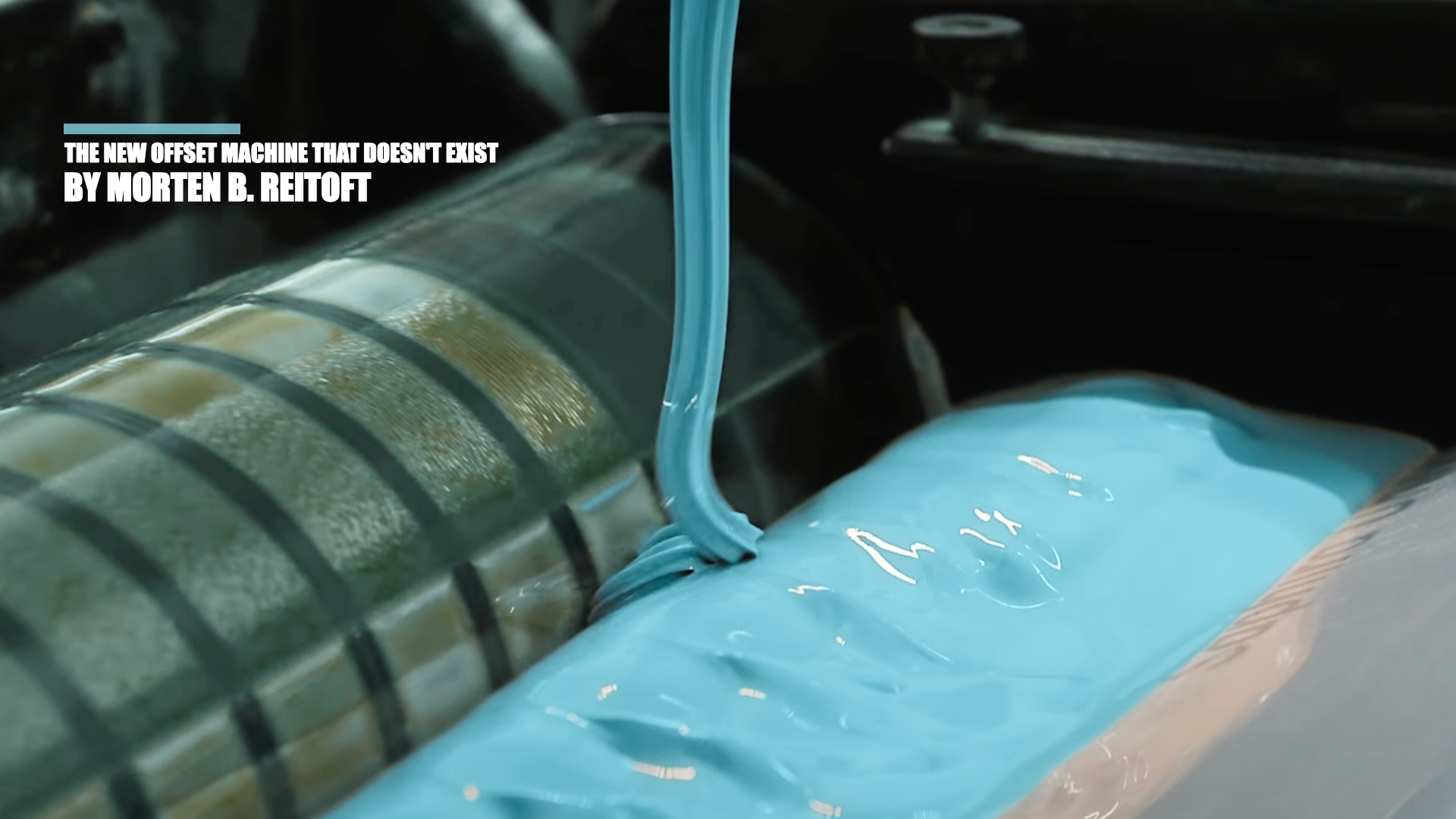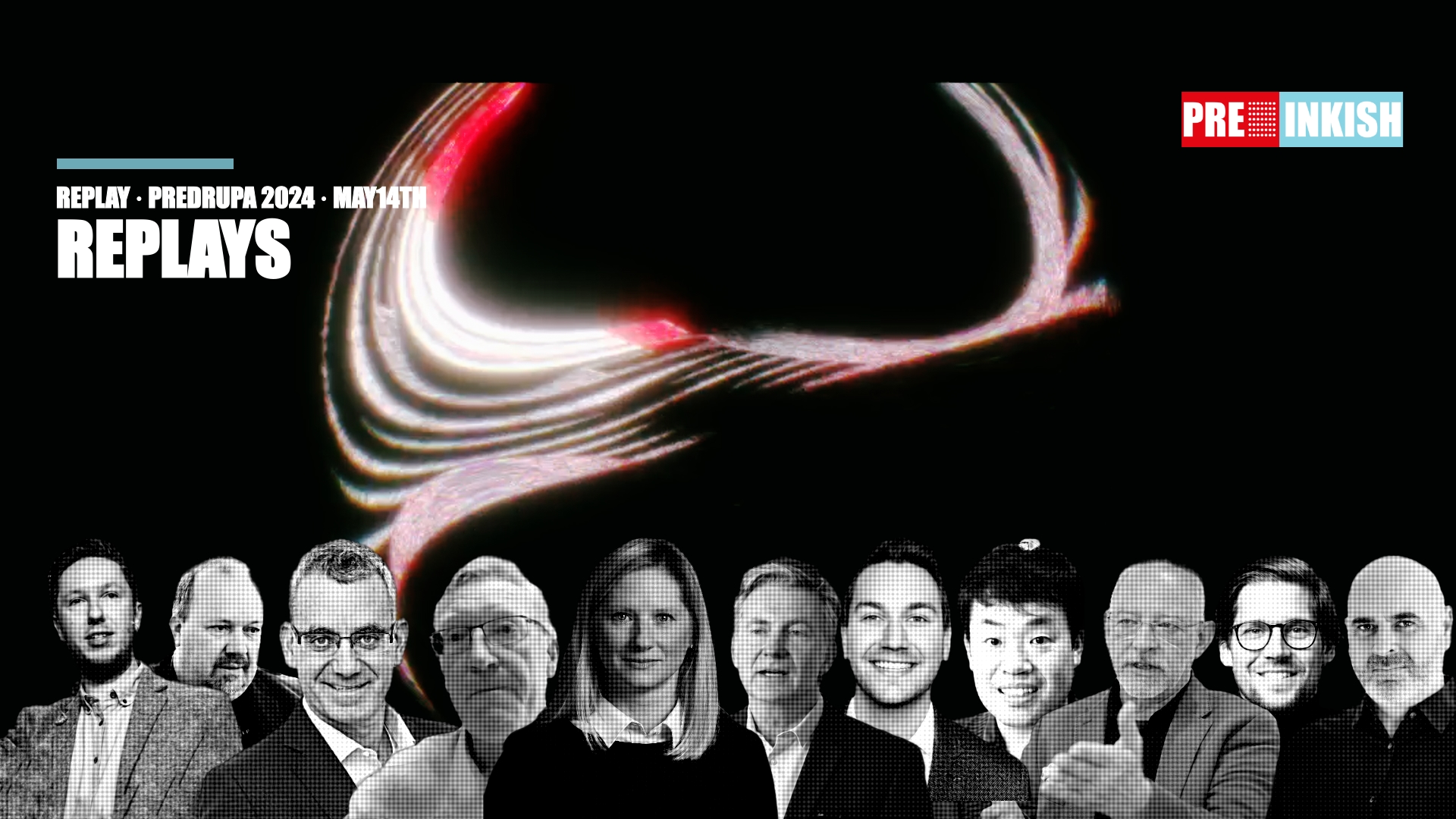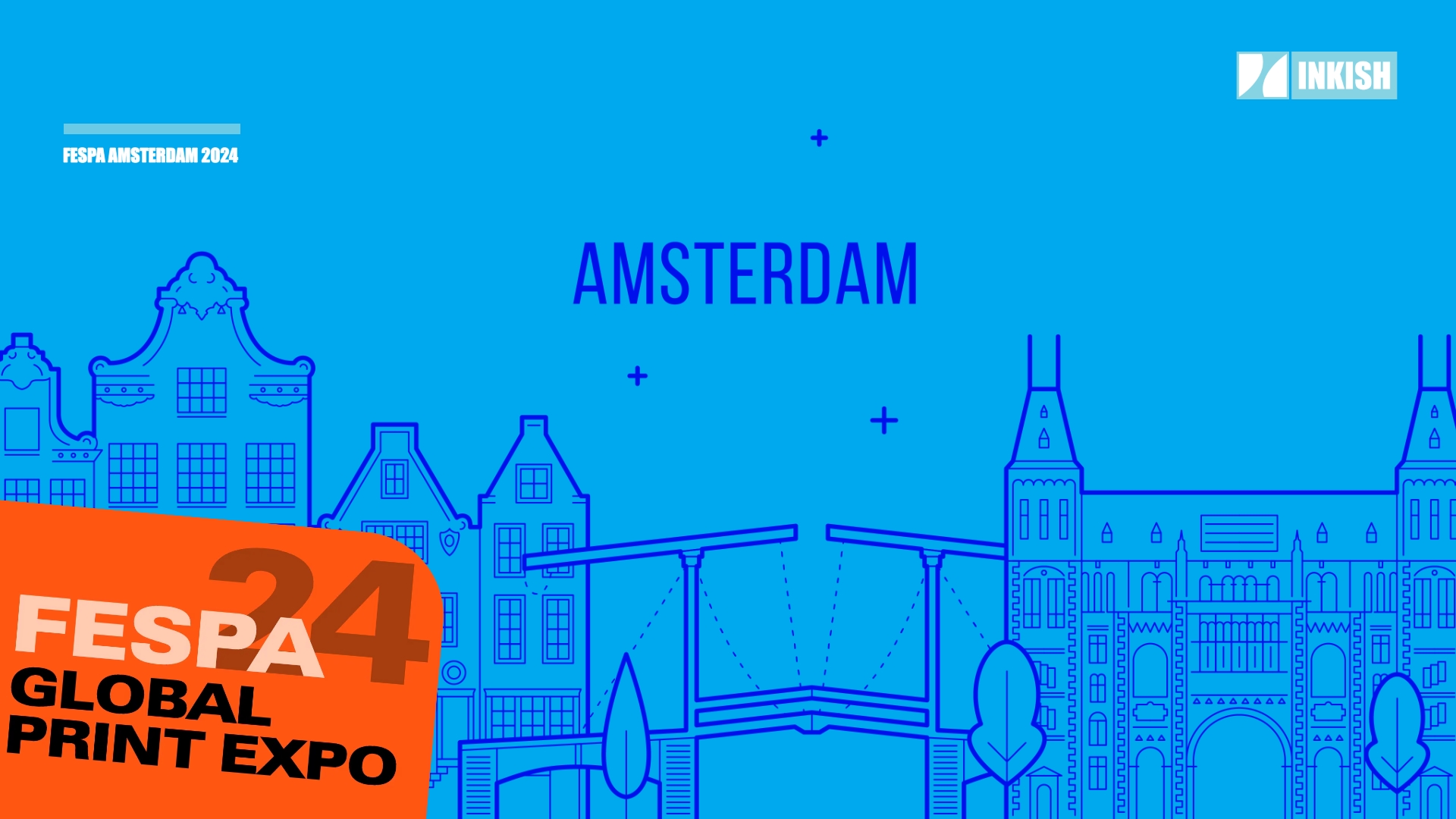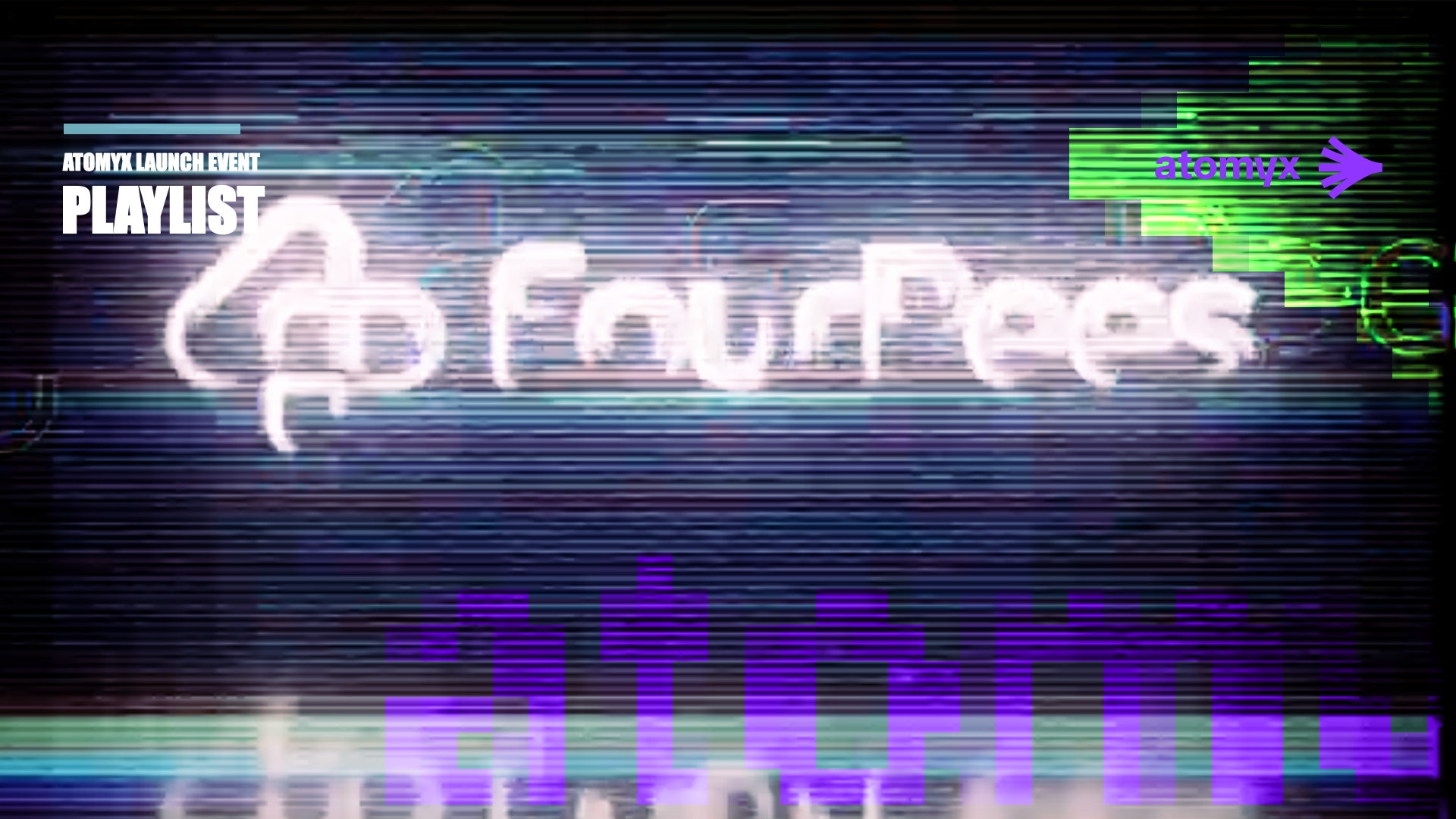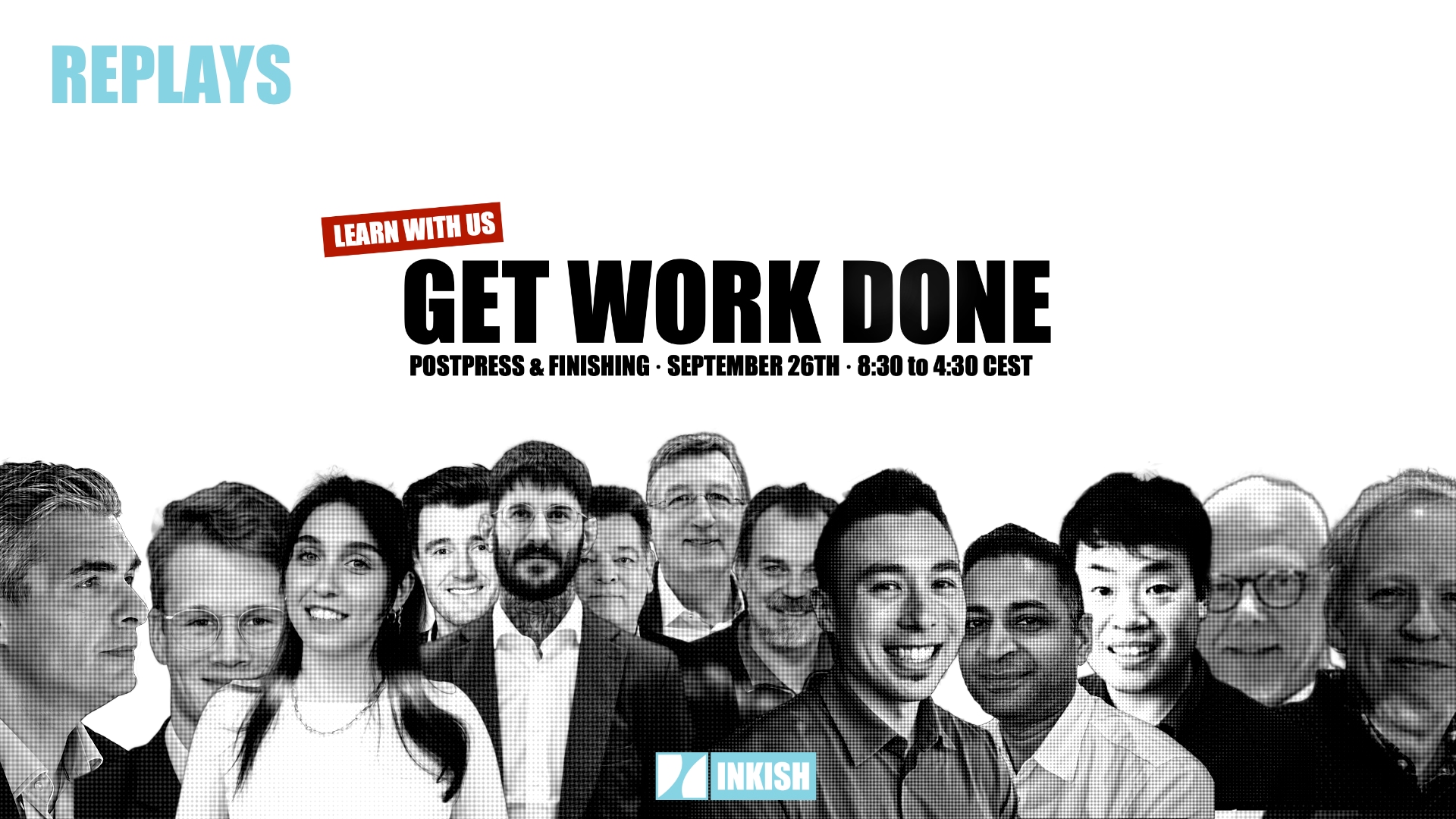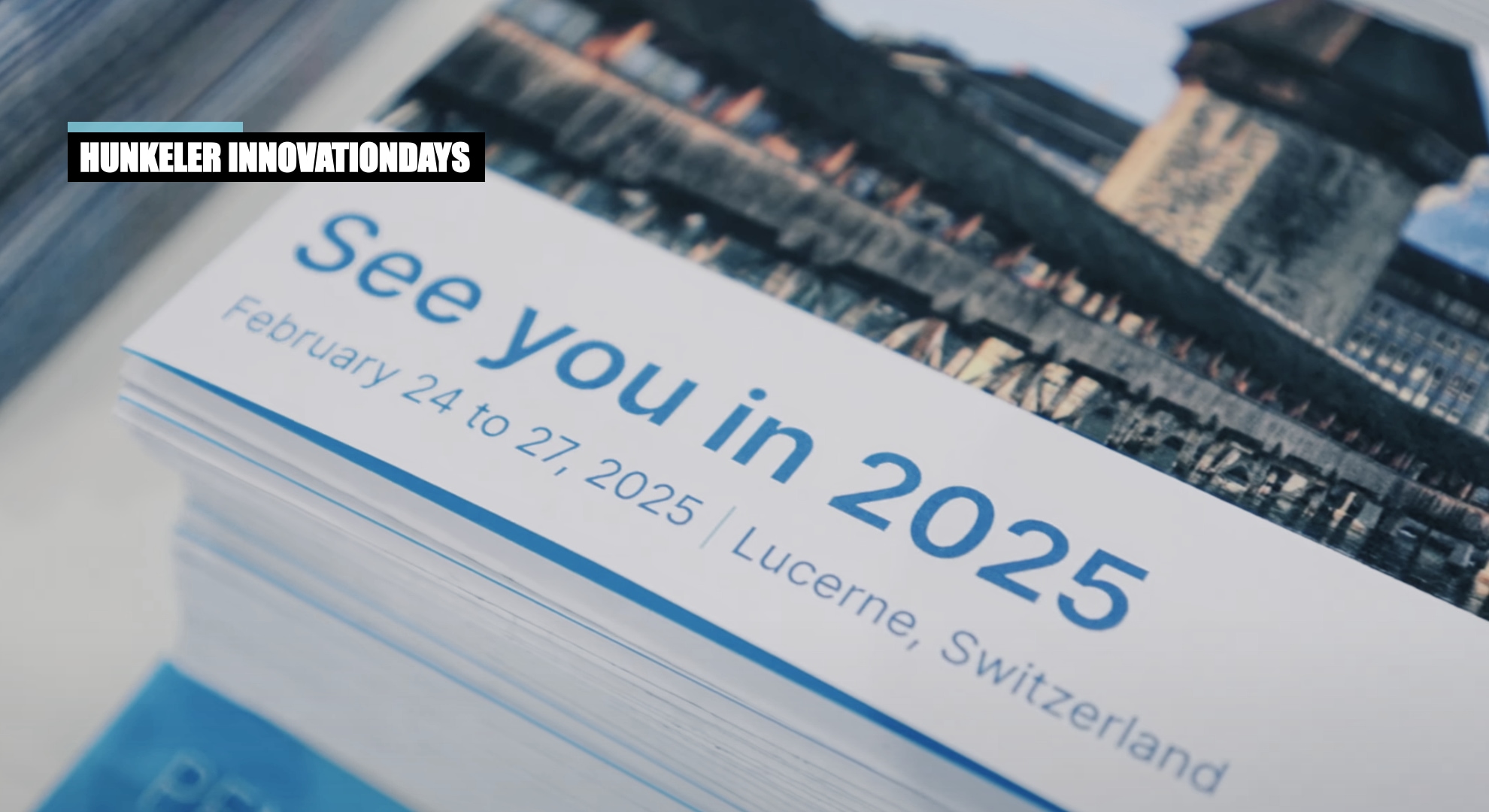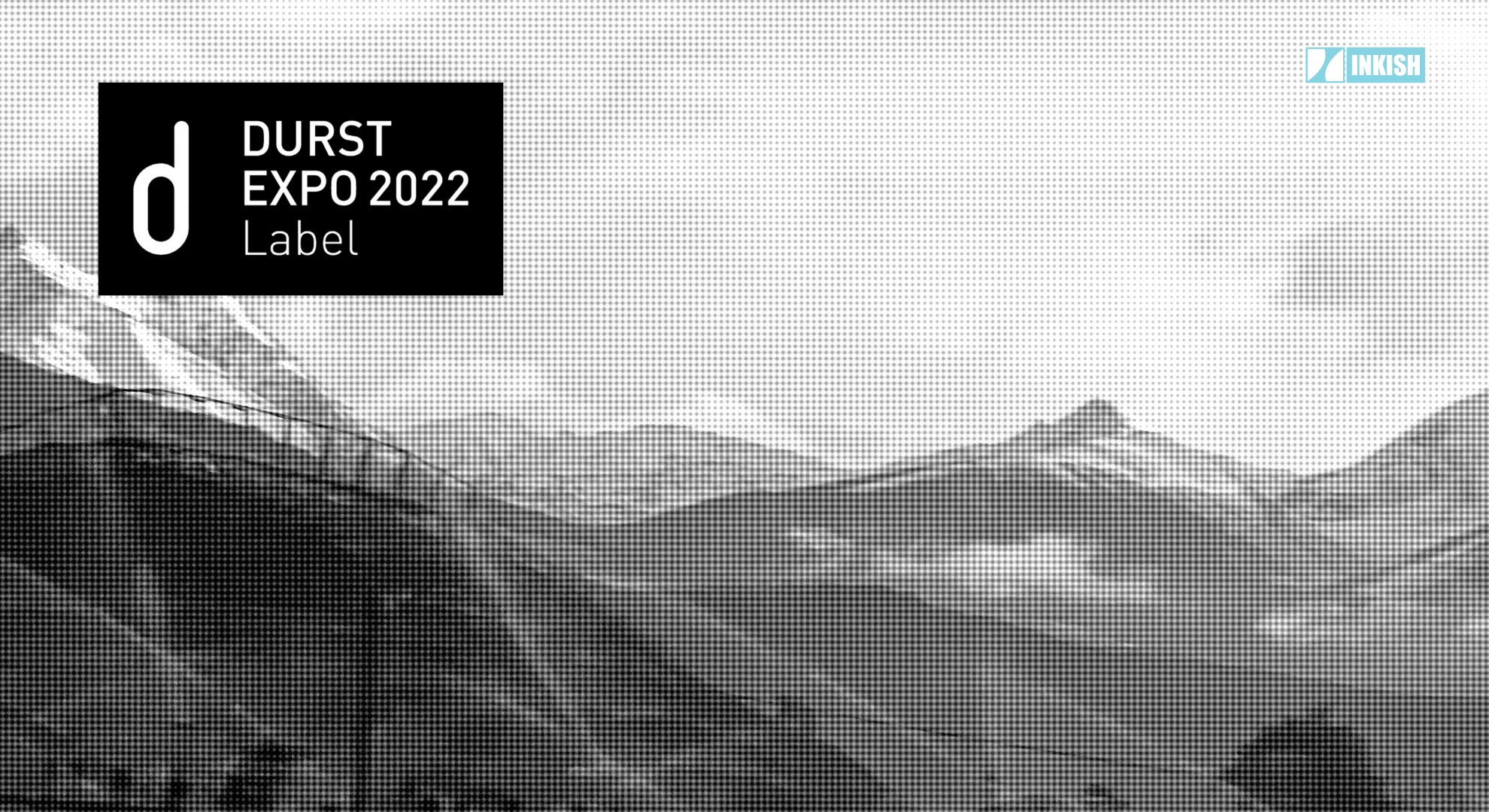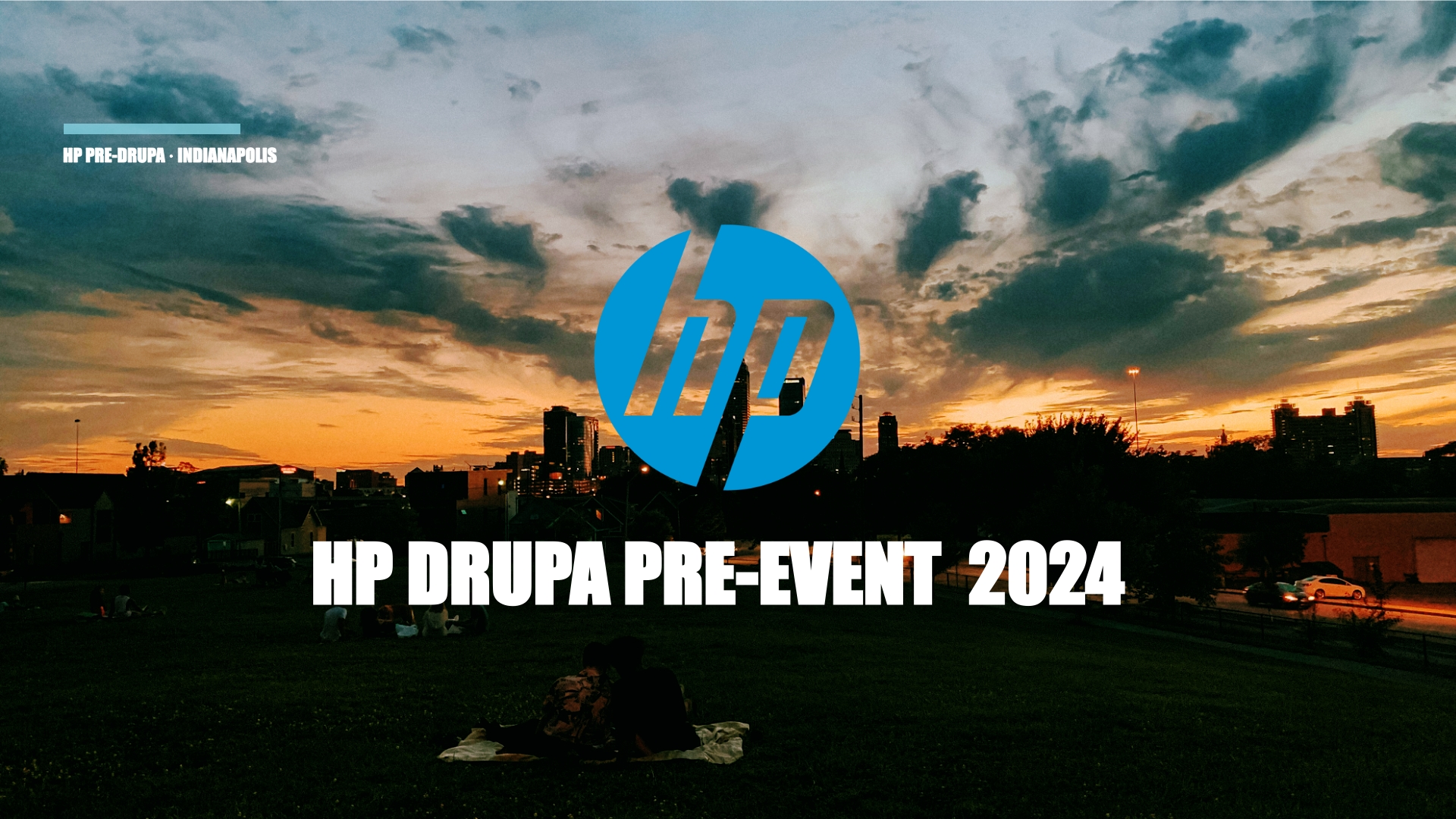Building Technology on Solid Legacy · Yoji “Joe” Otsuka · GM, Sales · Screen Graphic Solutions
Yoji Otsuka is the General Manager, Sales for Screen Graphic Solutions. In this conversation, he speaks over his American name “Joe” that he also uses on his business card, but more importantly how Screen has become one of the leading and most prominent suppliers of Inkjet presses. Screen Graphic Solutions was founded in 1943, but has roots back to 1868 – so what did Screen do before producing Inkjet machines?
Yoji “Joe” Otsuka explains that the legacy of Screen’s products and services are important elements in why Screen has become so popular.
As we mentioned on numerous occasions before – we LOVE the Conversations format where editor Morten Reitoft have a longer and always very friendly conversation with a guest. We met with Yoji Otsuka at the Think Smart Factory event in Kyoto last year – enjoy it. It’s a good one!
On your business card that I got from you yesterday, it has a Japanese name, first name. It has a Japanese last name.
Yes. And then in quotations it has “Joe” That is not your real name, is it?
No, that is not my real name. My real first name is, of course, Yoji. But, actually, I used to work for the Screen Europe as well, before assignment to the Screen US. Then our colleagues would say named Joe, because then it easier for them to call me.
Yeah.
Then I put that as name of Joe, as a, like, as a middle name.
So that it’s actually to make is easier for people that are not from Japan?
Yes.
OK, so can I just call you Joe today?
Yeah. please do.
Tell us a little bit why you’re here in Kyoto.
Actually, we are located in Kyoto and we are a graphic arts production equipment manufacturer and supplier to the industry. That is why we participate in this exhibition.
Japanese companies, that’s the founder of Screen as a company?
Yes.
And you are very famous for your TrueJet presses, right?
Yes.
What kind of equipment is it?
Actually we are very much well known as a graphic arts production equipment manufacturer. Started from glass screen for cash separation, plus camera, step-and-repeat machine and scanner then now is the inkjet printer.
Okay so your background and history is way longer than the inkjet?
Right, right. More than, let’s say, 75 years company business history. Based on that history we developed inkjet printer.
And when you talk about, for example, the scanning and all the screening things, can you actually take that knowledge and put into inkjet devices?
Yes, yes, yes, yes. Actually our imaging technology based on our history of scanning or well, I say, imaging, that is our expertise.
And how can a customer see that in the product?
Oh. What do you mean?
I was just thinking that you know if you, let’s say you that you are a printer and you want to buy an inkjet device and you go to let’s say drupa.
Yeah. And there’s like one manufacturer or two manufacturers or three manufacturers and then you come to Screen.
Yeah.
Why is your machine a better one?
I see. Actually as I,
If you would like to share that with me. I’d think you would like to, right?
Yeah, yeah, yeah. Actually I say we are not a ink manufacturer and not let’s say head manufacturer either. It seems to be our, let’s say, disadvantage however in fact, I could say, well we could say, that is our strength because we can freely choose best combination of ink and head per application. That is why customers would like to consider seriously our product.
And so, so what you’re saying is basically that the printheads you buy from elsewhere, OEMS?
Yeah, right.
And the ink you could buy as an OEM.
Yes.
So you can combine what is best for the,
Yes.
Is that per customer or per machine you develop? I mean so you have like the 520, all 520s are the same I guess, right?
Not really.
Not really, okay.
Yeah so if this product, let’s say, a target for the certain application we change the ink and the head.
So if I was a customer with you and I say to you, “I want to make this application.” Then you would configure the machine to my needs basically?
Actually not to make to order. Let’s say, already this exists. Having specific, let’s say, head and ink but in the development stage we can choose what the best one for application. So in our product this already has a certain target. Of course and we can expand not only that as a specific target but also as an application but first let’s say we decide which of this application we are going to, with that product.
That’s smart. So that actually gives you a, so you have, maybe it’s wrong to say but I’ll just try to say, is that, like, that when you choose Screen, it’s as much as like as a platform,
Yes.
so you can actually build it to your need right?
Yeah, right.
And, correct me if I’m wrong but isn’t it right that you have actually developed machines that can use untreated paper,
Yeah.
And you can actually do it both in a high quality and high speed at the same time?
Yes.
Is that, did I remember right?
Yeah.
When you buy the printheads and the ink from outside. Is the advantage you have of having untreated paper and high-speed high quality, is that because you can, you can, your engineers can go and say to your ink manufacturers, “we would like to have an ink that had these
Yeah.
“qualities
“And we want to have a print head that can,”
Yes actually not only the uncoated, untreated paper but also the offset coated stock our engine can print on.
Okay. So established we have like a machine where you have high speed, high quality and a high level of freedom to choose what is right for the customers.
Yes, one more.
One more?
High reliability.
Okay.
That is our one, I would say, advantage is our strength.
That’s even better right?
Yeah.
So, when did you produce your first inkjet machine?
Actually I would say our first inkjet machine for this industry was released at the end of 2005, let’s say in 2006.
Okay so around that.
Around that, yes.
12, 15, 16 years ago?
Yeah, yeah, yeah.
In that time there’s been a lot of competition.
At that time,
Not at that time, now?
Now yes.
Because when you started there wasn’t such big competition I think that it was like the Kodak Versa Press
Yeah, right. it was like some of the older generation inkjet machines right?
Yeah, right.
But now it’s a very, very competitive market.
Yes very competitive market, yes.
So how do you see that?
A very competitive market. We, let’s say, actually we are leading supplier or let’s say a provider to this market having our, let’s say, special ink which enables the customer print on the offset coated stock which is called SC-INK. But nowadays every, let’s say, our competitor now has such type of ink. Then the market situation is very much confused for the customer but we have our proven technology and we can easily to easily show the customer how you can print on that offset coated to stock and so on, how you can obtain such a nice quality or I would say productivity. So we can prove using our product at our showroom. Or even, let’s say, this exhibition.
Yeah because you are the only one that have an inkjet machine here, right?
Right.
But I like that approach too. I was just wondering because, so what you say is that Screen’s track record and proven ability to deliver, that is your biggest strength today?
Yeah.
And that is, so if I’m a printer again and I want to invest in inkjet this is that match up when I go to you I get proven technology, I have again as we spoke about the four different values that we spoke just a bit about before but I’m just curious because at drupa last time, that is three and a half years ago there was both nanography that was, oh not introduced, second time introduced.
I think even Mr. Landa said that, “who dares to invest in inkjet “when we have nanography around the corner.” And I think that the thing that has happened is that inkjet has just become much better in that time.
Yeah, yeah.
So I guess that you are still developing machines and technology because you want to be the leader
In the segment, right?
Yeah, right.
And how do you do that?
Actually nanotechnology is a great technology however thinking about the reality of the real world customer needed to obtain or needed to invest the equipment with reasonable cost. Currently this is still as a technology it’s very high also cost or price is very high. That is not a real solution for the customer. So what we we are aiming for is to provide the customer with reasonable, real solution for the customer to make a profit. That is the key for us.
Is that because the acquisition cost is competitive or is it because operational cost is competitive or is it a combination?
Actually currently, the customer who invested into an inkjet printer is, they have a certain suitable jobs for the inkjet. Whereas the digital, this is a production. So I’m very much limited but what do we say we are going to do? Is this limitation should be like the,
Ah so you expand the,
Expand, yeah.
The applications and the use of the technology.
And also the more solution oriented to, let’s say we should do the same make. That means not only our printer but also the finishing machines and even upstream should be as friendly or should be as suitable for the customers’ jobs. So we should be a solution provider. We shouldn’t be just a inkjet engine supplier.
Yeah that makes sense. And how is that in real life because I mean one thing is saying it another thing is doing it. Are you good at doing it also?
I hope so
You hope so, okay.
Actually as you already recognize we have about a nearly 15 years experience. Where there’s a history in this category or this inkjet world. So based on such experiences we have learned a lot and we do have now great expertise for the inkjet. Not only the engine, entire engine, well engine, let’s say body, transportation. We have also there’s the head. There’s the expertise, ink expertise. That is why we can choose the best of the ink and head then we can eventually develop whole inkjet engine.
But my question is more like, I think that, I think that your machine has proved, your history has proved that Screen is a good supplier but I think also in a competitive situation it’s also about how to go to market.
Yeah.
Is the market listening to your sayings because it sounds like good advices that you’re giving to your customers but are you successful in the market, in your opinion?
Yeah. Actually we are successful to a certain extent but we are not satisfied with the current situation.
Of course not, I mean you need to sell more right?
Yeah, right.
I think that this selling more is sometimes also a matter of challenging yourself and your organization right? Because if you just sit down and say, “okay this is good enough.” Then you end up having machines that are not good enough, right? You have to challenge yourself all the time.
Actually this year is very much this anniversary year, let’s say, big milestone because we have had 1500 unit installation this year.
Wow, congratulations.
Thank you very much.
That’s a lot of machines.
Right, right.
So that is like a good basis for developing new technology.
Yes.
It’s a good basis for all the research and development that you need to do?
Yeah. That is one of the examples for the proven technology but your question is not only proven technology how to stimulate the business further, right?
Yeah and I think that with the experience and if you look at the market, everybody’s talking inkjet now, right?
Yes.
I guess you are also at drupa of course.
Yeah, right.
Are you planning to release new products there or?
Yeah, actually yes,
So we have to wait.
Yeah and not only there is a product but also there is a far, innovative, total solution. As I mentioned, we would like to be a excellent solution provider. So on our next drupa our target is not only to show our new product but also to show our solution. That is our target for the drupa.
You know, sometimes when I talk to industry leaders like yourself and you know what’s going on in your laboratory and you know what’s going on with the engineers. Isn’t is sometimes very difficult to keep silent about it?
Yeah, sometimes yes.
You just wish to talk about it, right?
Right.
But you keep quiet of course, yeah.
Yeah.
You have to do that. It must be a surprise for the audience at drupa right?
Yeah, yeah.
Yeah. So now we’re here at the Think Smart Factory event. So what do you think of these three days?
Actually this are great three days. Actually we can show one of our solutions having, well connecting with a finishing machine. Customer can see from the upstream to the downstream actually, let’s say, live demonstration samples customer can take. That’s a great opportunity for us to promote our product. So overall those three days are very much successful, even two or three days for us.
Are you, do you get inspiration from a show like this, to say that when you exhibit at drupa or exhibit at some other events that you will do, like, end-to-end solutions yourself as well?
Yeah.
Did you do that also in other shows or is it this is an inspiration for you?
Actually we are planning, not finalised yet, but we have a strong intention to do this type of exhibition or show.
That’s great and I take that yesterday, did you go to the Train Museum?
Yes.
So you heard Horizon asking all the audience if they wanted to do next year’s Think Smart Factory?
Yeah.
So you will come next year as well?
If,
Or next time?
Yeah of course and we would like to participate again.
And how, I was just wondering because I mean if you look at all the exhibitors here it seems that some are competitors and some are not competitors but it seems that you have a strong relationship because you’re also depending on both the upstream and the downstream and all the devices and connectivity.
Right.
It must be fantastic to go a place and see that you can actually work with somebody that you sometimes meet as the competitors, right?
Yes. So sometimes we should compete against them but then sometimes we had better cooperate together in order for us to provide the customer with the best solution. Together with, even let’s say, partly our competitor.
And maybe, I mean you also went to Hunkeler I guess?
Yes.
And we went to Hunkeler Innovationdays and it’s also a very great show.
Yes.
But here it’s even more end-to-end solution than at Hunkeler. So I think that it has been, for me, it’s been a big inspiration to get here.
Because this show doesn’t have any let’s say, supplier booths.
No, that’s true.
That’s very much special.
Yeah because when you go to your booth you have your pressers there and then it goes into Hunkeler and then it goes into Horizon and then it goes to the binding and the conveyors.
Right.
And even the small robots that are taking it from, from, Shibu,
Yeah.
I can’t remember the name right now, but yeah. Well Joe, it’s been a pleasure meeting you.
Yeah, thank you so much.
Thank you very much for talking to us.
Me too, yeah.
Thank you very much.
Thank you.































